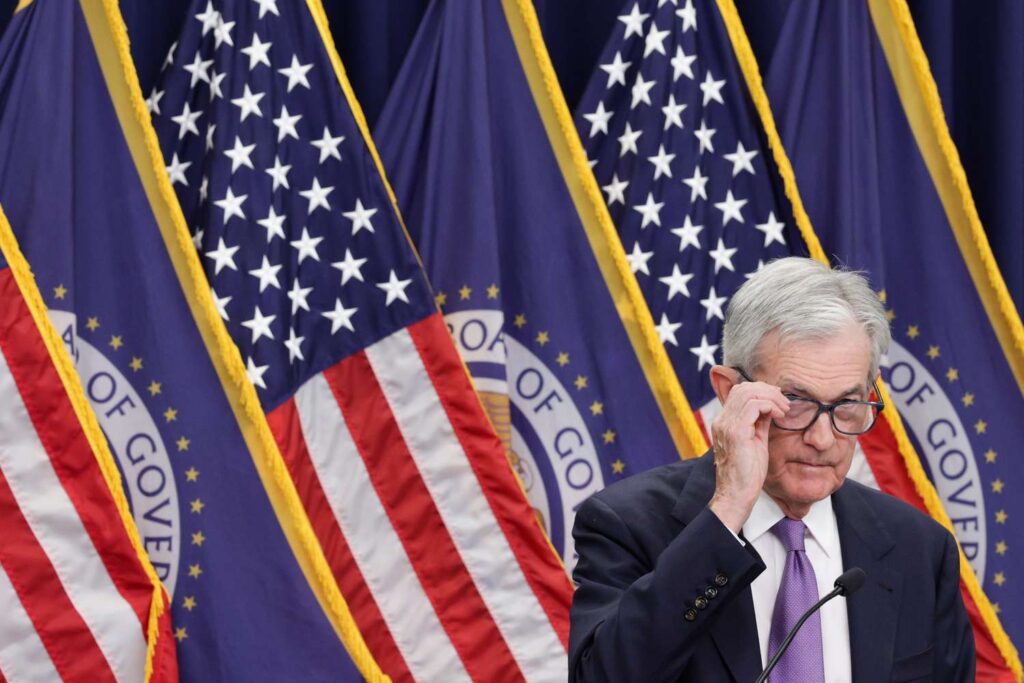Key Takeaways
- Federal Reserve officials are divided on whether to cut interest rates again in December: Some are urging caution amid lingering inflation, and others are pushing for cuts to stimulate the job market.
- A lack of government data from the ongoing shutdown has made it harder for policymakers to assess the economy, deepening uncertainty about the Fed’s next move.
If another interest rate cut in December isn’t assured, this week’s barrage of Federal Reserve speakers is a clear indicator why.
Some Fed officials appear undecided on whether to lower rates again next month, as many in financial markets expect them to do. A couple of others seem reluctant to cut again, while President Donald Trump’s newest appointee continues to press for more action.
Fed officials are “all over the place” in their communications, Andrew Brenner, vice chairman at NatAlliance Securities, wrote to clients. He still thinks the Fed will cut rates at its next meeting on Dec. 9 and 10, though he noted persistent uncertainty from a federal government shutdown that’s now in its 38th day.
“There is a lot of wood to chop over the next five weeks, with or without government data,” Brenner said, adding that the message from the Fed has been “confusing.”
Why This Matters to You
The Fed’s decision on rate cuts influences interest rates on mortgages, credit cards, auto loans, and savings returns, among other aspects of the economy.
The lack of data was clear on Friday, which marked the second month without an official U.S. jobs report. Fed officials are leaning more on private sector data, but they lack full visibility.
The cloudy picture is adding to Fed officials’ caution on a December cut.
The data blackout “makes me even more uneasy” about lowering the fed funds rate soon, Chicago Fed President Austan Goolsbee told CNBC on Thursday. He argued that it’s easier to see in real-time whether the job market is faltering, as alternative labor market indicators should pick up stress. The official inflation data is harder to replace, however.
“When it’s foggy, let’s just be a little careful and slow down,” Goolsbee told CNBC.
Fed Governor Stephen Miran, Trump’s latest central bank appointee, continued to press for quicker action in a Yahoo Finance interview. He said he’s more “sanguine” about inflation than other Fed officials and that higher-than-needed rates pose “unnecessary risks” to the job market.
The disparate messaging lines up with Fed Chair Jerome Powell’s description last week of “strongly differing views” within the central bank.
“A further reduction in the policy rate at the December meeting is not a foregone conclusion—far from it,” Powell said in opening remarks at a press conference.
Inflation Is Still a Risk
The caution about cutting—either in December or in 2026—is partly because inflation remains above the Fed’s 2% target.
The Fed cut rates in September and October, as the job market appeared to be weakening, putting its goal of full employment at risk. The Fed’s other goal is to keep inflation stable—which right now means ensuring it can fully return to 2% after a post-pandemic spike in prices.
Inflation is still too high and “trending in the wrong direction,” Cleveland Fed President Beth Hammack said on Thursday, with some indices closer to 3% and suggesting momentum in bringing down inflation has stalled.
“I remain concerned about high inflation and believe policy should be leaning against it,” Cleveland Fed President Beth Hammack said at an Economic Club of New York event on Thursday, adding that “it’s not obvious to me that monetary policy should do more at this time.”
Strong data on economic growth suggests “we’re in a pretty robust, healthy economy right now,” she said, arguing against more support from the Fed.
She flagged the risk that unemployment may tick up a bit amid continued softening in the job market. But “the bigger miss” in the Fed’s dual mandate has been on inflation, not employment, she said.
“It’s a really challenging time for policymakers,” Hammack said.
Some Officials Are on the Fence
Hammack doesn’t vote in the Federal Open Market Committee meetings this year, though she will rotate into a voting spot in 2026. Another more hawkish member of the FOMC, Kansas City Fed President Jeffrey Schmid, voted to keep rates unchanged last week.
Other officials seem on the fence about December. Fed Governor Philip Jefferson, for example, said he’s sticking to his meeting-by-meeting approach ahead of next month’s FOMC meeting.
“This approach is especially prudent because it is unclear how much official data we will have before our December meeting,” he said.
San Francisco Fed President Mary Daly said on Monday she will “keep an open mind” about December, according to Reuters.
St. Louis Fed President Alberto Musalem, meanwhile, noted the Fed’s cuts have been “appropriate” since they gave “insurance” against the risk of unemployment rising. However, he also noted inflation remains above the Fed’s 2% target.
“We have to be very careful to continue to lean against above-target inflation, while continuing to provide some insurance to the labor market,” Musalem said at a Fixed Income Analysts Society event.
